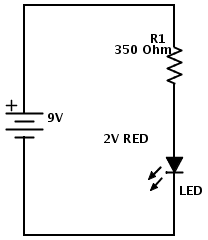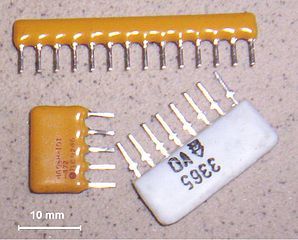Did you know there are many types of resistors?
Your electronic schematic tells you that you need a resistor of 100k Ohms. Ok, so you go to an online store to buy one. But there you get all these choices: Thin film, carbon composition, metal film +++.
“Just give me a freaking 100k resistor man!”, you scream in despair.
Believe me, I know your frustration. It took me a long time to actually bother reading about different types of resistors. So I just chose random resistors for all my electronic circuits. Usually, it worked flawlessly. Maybe I was lucky or maybe I just didn’t identify the resistor as the problem when I had a problem.
Anyway, my aim here is to provide a simple guide on how to choose a resistor without diving deep into details.
Resistor types
Resistors can be made of several different materials and methods. Here are a few types of resistors:

10 Simple Steps to Learn Electronics
Electronics is easy when you know what to focus on and what to ignore. Learn what "the basics" really is and how to learn it fast.
- Carbon composition
- Carbon film
- Metal film
- Thick and thin film
- Foil resistor
- Wirewound
The different types have different properties. Some are very accurate, some can withstand high temperatures, some can withstand high power and some are cheap. Some are good for low noise applications, some are good for high-power applications, some for high-speed applications and some for measurement circuits.
If you want to learn more about the specific resistor types, I recommend checking out www.resistorguide.com
Choosing a resistor
So, how do you choose a resistor?
First of all, you need to choose the resistance value. To do that you use Ohm’s law. One common example is to find the resistor value you need for an LED.
Next, you need to consider the power that the resistor needs to dissipate. Power dissipation in a resistor can be calculated with the formula

where P is power in Watt, V is the voltage drop over the resistor and R is the resistance of the resistor in Ohm.
Let us look at an example:

In this circuit, we use a LED with a voltage drop of about 2V. We found that the resistor should have a value of 350 Ohm. The circuit is powered by a 9V battery.
How much power will dissipate in the resistor?
To answer this, we first find the voltage drop over the resistor. Let’s say we use a LED with a voltage drop of 2V. That means the voltage drop over the resistor will be 9V-2V = 7V.
Using the formula for power dissipation, we find P = 7V*7V / 350 Ohm = 0.14 W.
So we need a resistor with a power rating of at least 140 mW. But preferably more.
A rule of thumb is to find a resistor with twice the power rating. Here I would choose a 250 mW resistor since those are the most standard ones.
Usually, you can just use the cheapest resistor you can find with the correct power rating.
When to choose a non-standard resistor?

So why all these different types of resistors that I mentioned before? Because for some circuits the actual type of resistor also matters. These circuits include:
- Noise-sensitive audio circuits
- RF circuits
- High-power circuits
- High-accuracy measurement circuits
- High-speed circuits
Which resistor type to choose for which application is beyond the scope of this article. If you are building any of these types of circuits, see if the schematics specify the resistor type. If not, maybe this article can help you out.
Summary
For most standard circuits, you don’t need to worry about the types of resistors you choose. All you need to worry about is the resistance value and how much power it can take.
If your schematic does not tell you the necessary power rating for the resistor and you don’t know (or don’t want to know) how to calculate it, then try using a standard 1/4W resistor. If it fails after a short while, you should exchange it for a higher wattage rating. Maybe you should even take the effort to calculate a decent value ;)
Do you think it’s hard to choose a resistor? Write your comments and questions below!
Return from Types of Resistors to Electronic Components Online
More Resistors Tutorials

10 Simple Steps to Learn Electronics
Electronics is easy when you know what to focus on and what to ignore. Learn what "the basics" really is and how to learn it fast.

